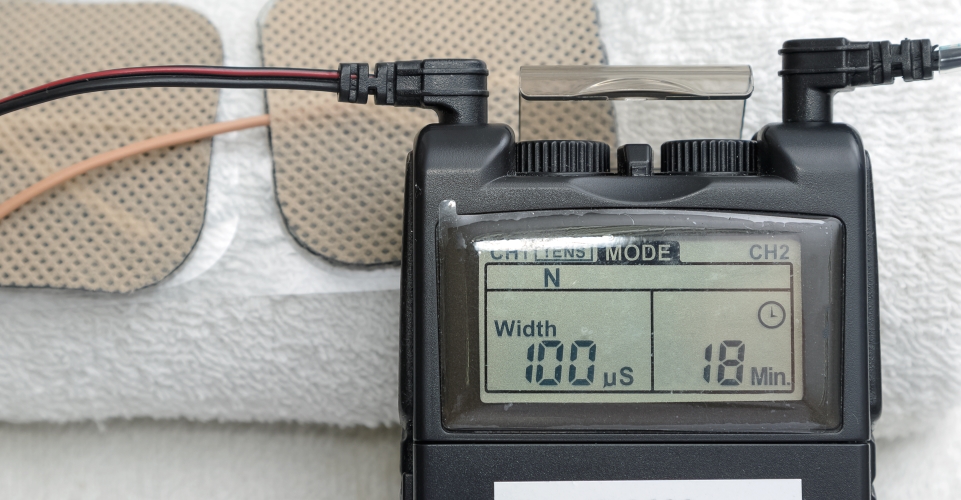
Our Editors independently research, test, and rate what we feel are the best products. We use affiliate links and may receive a small commission on purchases.
Pain is a necessary warning sign, yet a tormentor of mankind as old as time. The methods used to control pain are endless, with some being more efficient than others. One of the more effective methods is TENS technology.
History
If you’ve heard of TENS (Transcutaneous Electrical Nerve Stimulation) units before, you may see it as more of a modern-day technology used for therapeutic purposes for the muscles of the body. However, did you know that similar technology actually started back in ancient Rome?
Well, it’s similar in the fact that they used electricity. The difference comes where they used live electric rays instead of the portable little units we have today. In fact, even Benjamin Franklin used such devices!
During the 19th century, a unit named the “Electreat” was often used to treat cancer and lower levels of pain. While it was not portable, it continued to be used well into the 20th century due to how effective it was.
We should be grateful for the convenient pads used today, because back then the device was implanted into the patient’s spinal dorsal column. Thankfully, technology has improved quite a bit since then – mainly in terms of portability and efficiency.
So, how did the TENS device that we know today come about?
In 1974, the first portable unit was patented in the US. It was initially a testing stage used to establish the level of tolerance for patients dealing with chronic and acute pain and how they responded to electric muscle stimulation. Many notable names in neurology quickly caught on and became used much more widely.
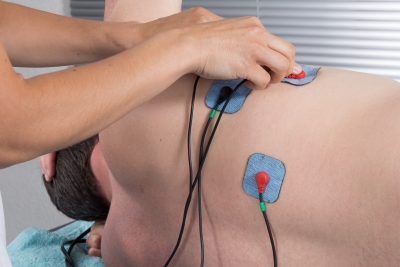
After receiving consistently positive results, it began being used to treat those with Parkinson’s disease, epilepsy, and other disorders which affect the nervous system. Today, we find units are wearable, portable, and much more user-friendly.
Medical Applications
What are they used for today?
Mainly, they’re used for managing pain. Using non-invasive nerve stimulation, TENS units have been proven to reduce both acute and chronic pain. However, professionals have noted that it’s necessary to receive a certain amount of stimulation intensity in order to actually receive the benefit of pain relief.
While it shouldn’t be painful as that would counteract the intention behind the technology, it should be strong yet comfortable. In addition, positive outcomes were higher when treatment was more frequent.
A few studies have come up with an interesting find: that TENS may be able to suppress pain signals in the brain. The studies used different methods, but the results were the same. One study showed that high-frequency TENS lowered pain-related cortical activations in patients with carpal tunnel.
Another, that low-frequency TENS reduced shoulder impingement pain and modulated pain-induced activation within the brain. For migraine relief, a device called “Cefaly” was made to be placed over the head.
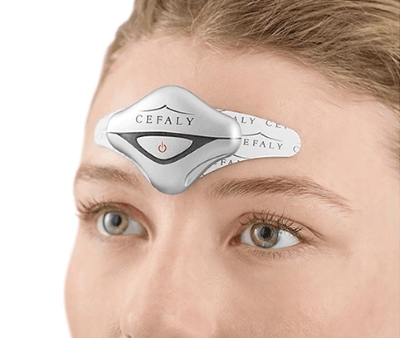
The FDA-approved device was proven to be quite effective at both preventing the migraines, as well as reducing migraine-associated pain. Cefaly would be the first FDA-approved TENS device for pain prevention, rather than just suppression.
Is there anything else the units are good for?
Labor pain and dentistry. While efficacy of TENS units for labor pain has had mixed results, electrical stimulation for dentistry-related pain control has been used for centuries. We all know how painful dental-related issues can be, which is probably why it’s been used for this purpose since 63 A.D..
The non-pharmacological method is an excellent alternative to taking pain medication, which is often the only option we have when it comes to dental pain relief. Similarly, it can be used to minimize pain during various oral procedures, in addition to various maxillofacial conditions.
Why would TENS be used when we have anesthesia? Firstly, many people are afraid of needles and would do anything to avoid them. Second, anesthesia must be used with absolute precision, which brings unnecessary risk into the game.
Operation
TENS is applied to patients at different frequencies, intensities, and pulse durations. There are two categories, defined by the stimulation frequency. One, is high-frequency, and the other is low-frequency.
High TENS frequency goes by the gates theory, which gives solely short-term pain inhibition, where low operates through the release of endogenous opioids. Have you heard of “endorphins” before? Endorphins are a type of endogenous opioid.
They are released during moments of high stress or pain and produce a drug-like effect (i.e. morphine or codeine) to reduce our perception of pain. The effect that the low frequency gives us causes a more systemic, long-term response in the body.
Each TENS unit consists of: a unit, lead wires, and electrodes.
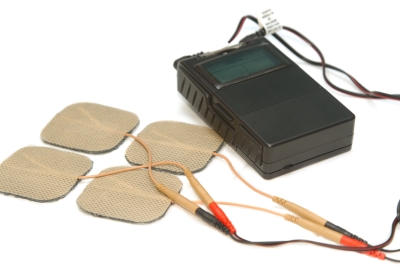
Unit – This generates the electric pulse. It can be easily carried and taken with you just about anywhere you go, thanks to the small, portable design. They’re powered by a battery (either rechargeable or replaceable) so you don’t have to worry about having to plug It in to use it.
Lead Wire – These are what bridges the electrodes to the unit.
Electrodes/Pads – The TENS unit provides the electric flow, where it is converted into an ionic flow in the living tissues of our body. You’ll typically have one of the two types of electrodes: carbon or tin plate/aluminum. The carbon type is preferable, as it is made with silicone rubber, making it nice and flexible.
You apply it to the skin with a conductive gel, and they’re held in place by surgical tape. The tin plate or aluminum type do not form to the shape of your body, and are placed onto the skin with tap water-moistened cotton pads or sponges.
As you can see, it’s quite easy to take these units with you. While we don’t recommend using them while driving, you can pack them in a carry-on and take it with you while traveling. You can place it in your bag to take to work or after working out. The possibilities are endless.
Alternative Devices
If you’re trying to manage your pain, there are a few alternative technologies that we’d also recommend. Below, are just a few of our favorites.
HEAT Pain Pro TENS Device
If you’re suffering from acute joint and/or muscle pain, give this one a look. While it’s still a TENS unit, it differs in the fact that they also add heat into the mix. There are plenty of products that give you one or the other, but this is the only device that offers both.
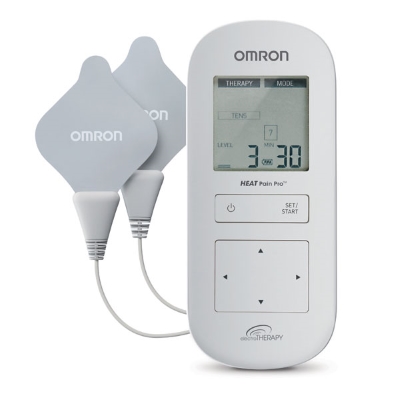
Combining TENS with heat provides you with a new level of pain relief. The palm-sized device features a whopping 27 combinations of the two methods, as well as 20 levels of intensity. In addition, you’ll benefit from pre-set programs which are made specific to various locations of pain, such as the lower back, feet, joints, and more. The device is powered by a rechargeable battery, and includes gel pads.
Radiofrequency Ablation Devices
Used by St. Jude Medical Center, Boston Scientific Corporation, and more, there’s no questioning the kind of value this device brings to the table. Ideal for treating chronic pain and geriatric pain, it utilizes radiofrequency therapy which generates heat to reduce pain to tissues part of the peripheral nervous system.
It’s an excellent alternative to surgery for many, and the demand for this type of technology continues to rise. The best applications for these devices are for surgery-related complications, side effects, and recovery time.
ActiPatch
If you’re suffering from arthritis, shingles, neuropathy, fibromyalgia and other muscle or joint pain then take a look into the ActiPatch. The non-invasive device utilizes electromagnetic fields to change efferent nerve activity, essentially reducing your perception of pain.
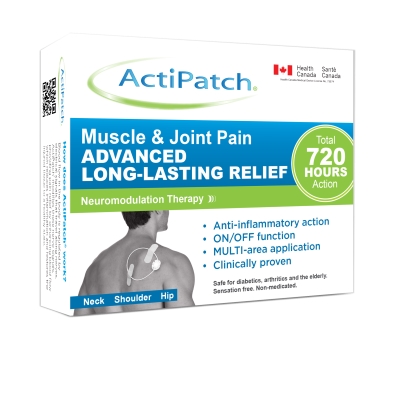
Currently, it’s the only neuromodulation electroceutical device for serious pain which is available without a prescription. While many of the consumers are elderly, it’s important to note that it can be used with pacemakers, defibrillators, and metal implants.
Virtual Reality
While many of us associate virtual reality (VR) with recreation, there is now proof that these full-body sensory experience games can help with chronic pain relief. Due to requiring a higher level of the brain’s attention, it can distract from the pain you’re experiencing. While it still needs to be studied more in-depth, the initial responses are positive.
Summary
If you’re suffering from pain – either acute or chronic – and are tired of opting for medication, we encourage you to give TENS technology a try. Of course, it’s always a wise idea to consult with your physician before use. You can rest assured that the risk of side effects is quite low, while the potential benefits are high.
Plus, you may save yourself some money by not having to purchase pain medication quite as often. You’ll definitely save time and hassle from having to carry around a bottle of pills, as opposed to a convenient little unit. We hope that this has been of some help to you, and look forward to seeing you again soon!
Read more about TENS units: The 5 Top-Rated Best TENS Units
Notice:
HealthWellness365 is a participant in the Amazon Services LLC Associates Program, an affiliate advertising program. HealthWellness365 earns fees from products sold through qualifying purchases by linking to Amazon.com. Amazon offers a commission on products sold through their affiliate links.In March 2019 Amazon announced that Health Savings Accounts and Flexible Spending Accounts (HSA/FSA) would be accepted as new forms of payment for eligible product purchases. Using HSA/FSA funds to purchase on Amazon can be a great way to reduce taxes and reduce overall healthcare costs for items not covered under medical insurance. Users of such medical savings plans are issued a debit card by their provider, which can be added to their payment methods in their Amazon account.
Whether items sold on Amazon are deemed as eligible for HSA/FSA plans remains the responsibility of the buyer and their particular health plan provider. It’s ultimately up to the IRS and participating health plan providers to deem which medical and health products are considered eligible for the payment plans.
But the eligibility is quite broad and inclusive of thousands of products that are sold on Amazon and considered Health Savings and Flexible Spending Accounts plan-eligible. See this IRS document for more information about Health Savings and Flexible Spending Accounts: https://www.irs.gov/pub/irs-pdf/p969.pdf
